The Honda CBR1000RR-R and BMW M1000RR depict the best of modern-era liter class super sports.
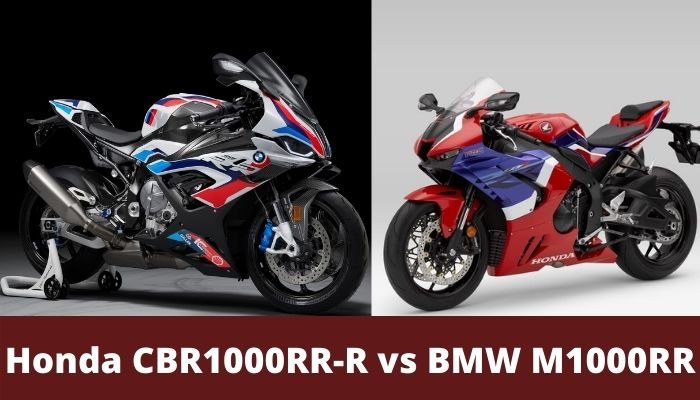
In the world of liter class super sports, the battle of supremacy has touched bigger heights than ever before. All the companies are trying to offer the best of what they could in terms of performance and electrical wizardry. In this process, two of the stalwarts of this segment – Honda and BMW – have tried to up the ante by offering the best of their excellence with their new flagships – the Honda CBR1000RR-R and BMW M1000RR.
Both the Honda CBR1000RR-R and BMW M1000RR have a drool-worthy spec-sheet at eye-watering price points which make them the greatest of the liter class super sports of the modern era. Here, we compare both these motorcycles to find out which one is worth going for if you have all the money of the world.
Price

Both the Honda CBR1000RR-R and BMW M1000RR sit in the upper spectrum of the liter class super sport category. Honda shocked everyone with steep pricing for the CBR1000RR-R – Rs. 32.68 lakh for standard and Rs. 34 lakh for the SP version. On the other hand, BMW went one step further by pricing the BMW M1000RR at Rs. 42 lakh for the standard and Rs. 45 lakh for the Competition variant.
Engine and Performance
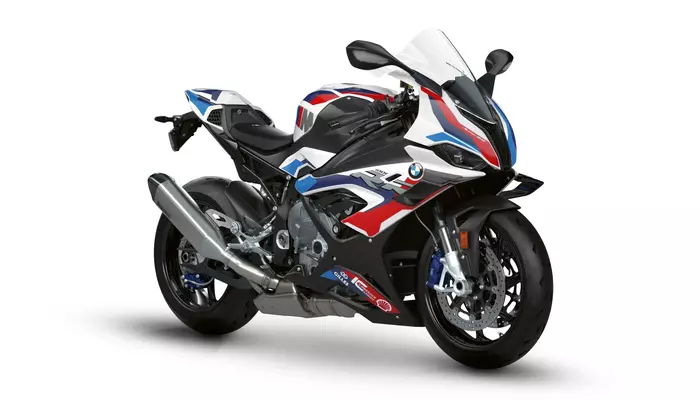
The heart of a liter class super sport surely has to be its engine, and both the Honda CBR1000RR-R and BMW M1000RR excel here. Both these high-performance liter class super sports get new-age high revving engines which have the meat of the performance lying in their higher rev range.
Powering the Honda CBR1000RR-R is a four-stroke, liquid cooled, inline four, 1000cc engine, which has been derived from the Moto-GP spec RC213-V’s mill. The engine is all new as compared to that of the previous generation Fireblade, and gets a lot of Moto-GP tech like finger-follower rocker arms, DLC (diamond like carbon) coating and improved crankshaft and intake valve angles. This engine makes 218 bhp of maximum power and 113 Nm of maximum torque output.
Compared to that, the four-stroke, liquid cooled, inline four, 999cc engine of the BMW M1000RR is derived from that of the standard S1000RR, which already is one fantastic base to start with. This engine features longer and lighter titanium connecting rods, two-ring forged pistons, revised intake port geometry, slimmer and lighter rocker arms and titanium valves for the exhaust port compared to the engine of the S1000RR. This makes an evident upgrade in performance, with 212 bhp of power and 113 Nm of torque on tap.
| Specifications |
Honda CBR1000RR-R |
BMW M1000RR |
| Engine |
4-stroke, liquid cooled, inline four, 1000cc |
4-stroke, liquid cooled, inline four, 999cc |
| Power |
218 bhp |
212 bhp |
| Torque |
113 Nm |
113 Nm |
| Gearbox |
6-speed |
6-speed |
ALSO READ: Suzuki Hayabusa vs Kawasaki Ninja H2R
Exterior and Dimension
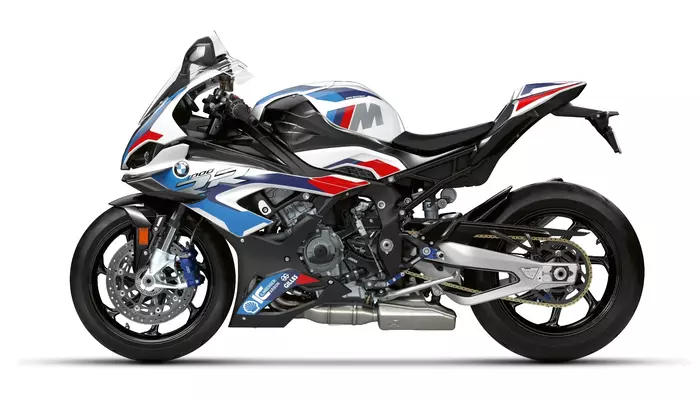
Compared to the Honda CBR1000RR-R, the BMW M1000RR measures smaller length. However, it is wider and taller than the Honda CBR1000RR-R. The lower wheelbase and kerb weight of the BMW M1000RR, making it a more agile motorcycle for track-oriented riding. However, the CBR1000RR-R is no slouch either, and still manages to be one of the most dynamic motorcycle to ride in this segment.
| Dimensions |
Honda CBR1000RR-R |
BMW M1000RR |
| Length |
2100 mm |
2073 mm |
| Width |
745 mm |
848 mm |
| Height |
1140 mm |
1197 mm |
| Wheelbase |
1455 mm |
1441 mm |
| Seat height |
830 mm |
832 liters |
| Ground clearance |
115 mm |
120 mm |
| Kerb weight |
201 kg |
192 kg |
| Fuel tank capacity |
16.1 liters |
16.5 liters |
Design and Features
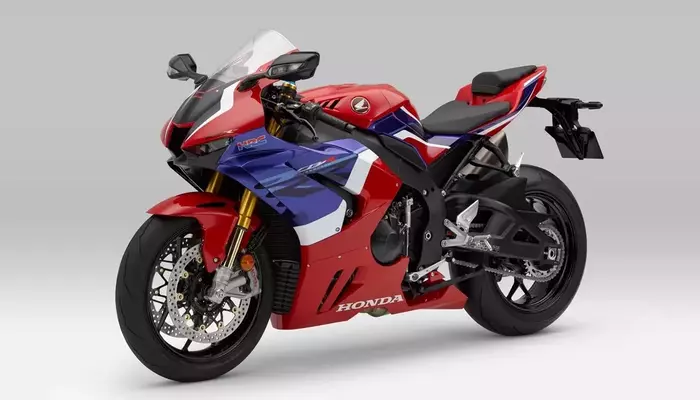
Both the Honda CBR1000RR-R and BMW M1000RR pack in incredible amount of features and electronic riding aids. However, analyze closer, and you will find that the BMW M1000RR feels more special and premium in comparison.
The Honda CBR 1000RR-R is blessed with bits like dual channel ABS, five different power modes, ten different torque control modes, three engine braking levels, three selectable levels of wheelie control and Anti-slip regulator.
On the other hand, the BMW M1000RR gets ABS Pro, pit lane limiter, seven ride modes (Rain, Road, Dynamic, Race, Race Pro 1, Race Pro 2 and Race Pro 3), hill start control pro, launch control, up and down quickshifter, dynamic traction control, slide control, wheelie control, dynamic brake control and shift assist pro. In the more premium Competition variant, it adds in an M Competition package, which is a combination of M Brake lever, M Clutch lever, M carbon parts, M Rider footrest, M GPS laptrigger, M Engine protector, M endurance chain and passenger seat cover.
Chassis
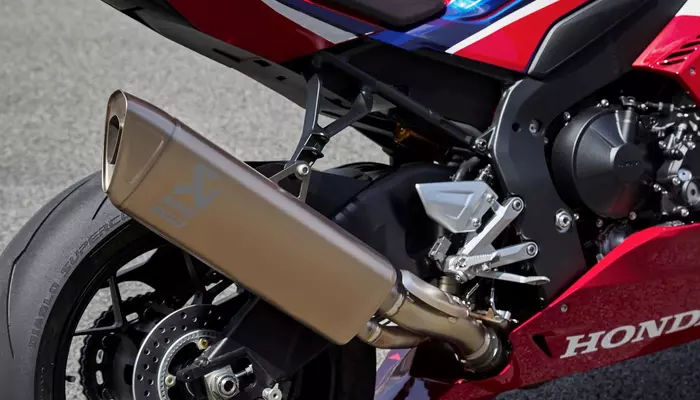
Both the Honda CBR1000RR-R and BMW M1000RR get top-notch mechanicals under their fancy skins, which make them the desirable corner carvers everyone dreams of.
The Honda CBR1000RR-R comes with 43mm inverted hydraulic forks from Ohlins with preload, compound and rebound adjustment at the front, while the rear gets a pro-link with gas-charged Ohlins TTX36 smart-EC damper featuring preload, compression and rebound damping.
Here too, the BMW M1000RR feels one inch more premium. While it misses out on fantastic bits from Ohlins, it gets BMW’s own-developed mechanical setup. The suspensions combination has 45mm upside down telescopic forks with adjustable compression and rebound at front and aluminium swingarm with full floater pro monoshock compatible with compression and rebound damping adjustments at the rear.
The Honda CBR1000RR-R’s braking setup (330mm dual discs at front and 220mm single disc at rear) feels better than that of BMW M1000RR (320mm dual discs at front and 220mm single disc at rear). However, the carbon wheels on the BMW M1000RR adds in as a weight saving measure and aids in better agility.
Verdict
Needless to say, these two motorcycles here – Honda CBR1000RR-R and BMW M1000RR – are the best shots from Honda and BMW respectively in making a full-blown track-oriented liter class super sport. Both these motorcycles have left no stone unturned where the things actually matter – a power packed inline four engine, great setup of suspension and brakes and comprehensive list of electronic riding aids.
In traditional Japanese fashion, the Honda CBR1000RR-R here might feel a better value for money option and more sensible option compared to its European rival. It packs in an uncompromised attitude at almost Rs. 10 lakh lesser than the BMW M1000RR. This difference is actually a lot of money. However, the BMW M1000RR tries to justifies that hefty premium with its lighter components and more premium parts, which might appeal to those who buy a motorcycle from heart.
ALSO READ:
You must be logged in to post a comment Login